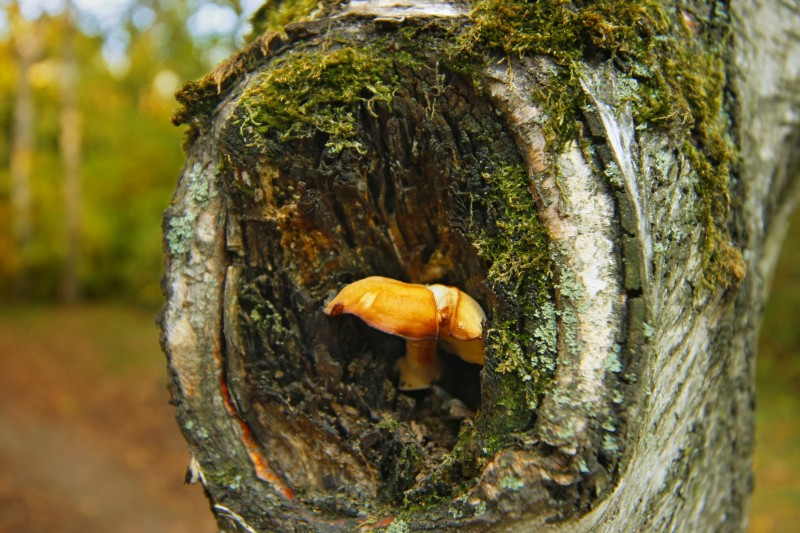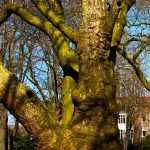Is Moss Growing on Trees Harmful?
(Updated July, 2024)
Finding moss growth on trees is highly common in Washington and Oregon because of our rainy, wet climate. A common question homeowners ask is whether moss growing on trees is bad for their overall health. While the short answer is no, the extra weight moss lays upon older trees can weaken their stability in windy storms and hide potential tree diseases from view.
What Causes Moss on Trees?
Collectively known as lichens, algae, and moss, it thrives in damp, dark areas, so regions covered by shadows or consistent cloud cover are more susceptible to moss growth. Moss prefers to grow on older trees with less vitality than younger trees. These organisms take advantage of the Pacific Northwest’s damp, shaded conditions to flourish on tree bark, trunks, and branches.
Moss, algae, and lichens are different organisms, but they share similar growing conditions. Mosses are small, soft plants that grow in clumps and do not have flowers or seeds. Algae are simple photosynthetic organisms found in moist environments, and lichen grows as a symbiotic partnership between a fungus and an alga or cyanobacterium.
Is Moss Harmful to Trees?
While green moss on trees isn’t necessarily harmful, it can contribute to a myriad of potential problems. Thick moss growth on trees is heavy and can throw trees off balance which could make for dangerous conditions during windy storms and other inclement weather. Because moss grows more thickly on older trees, this can make it difficult to notice potential health problems, especially around the tree trunk.
Interestingly, moss and other growth do not directly harm the tree by drawing nutrients or water from it. Instead, they utilize the tree’s surface for support while they photosynthesize and absorb moisture from the air. But the presence of moss can sometimes indicate that a tree is in a declining state of health or is growing in less-than-ideal conditions.
This means that while the moss itself isn’t killing the tree, its presence could signal underlying issues that need addressing.
Prevention Tips for Green Moss on Trees
 So, what is there to do when there’s green growth covering your beloved trees? To prevent an excess amount of moss from growing on your trees, there are some do-it-yourself strategies you can try:
So, what is there to do when there’s green growth covering your beloved trees? To prevent an excess amount of moss from growing on your trees, there are some do-it-yourself strategies you can try:
- More Direct Sunlight: Pruning your trees to focus more direct sunlight on the trunk and major branches can help keep moss growth under control. Your goal is to aim for those leafy branches that are covering the base of the tree in shadow. Increased sunlight helps dry out the tree’s bark, making it less hospitable for moss.
- Avoid Standing Water in the Yard: You can aerate your lawn to remove large puddles of water around the base of the tree. This will discourage moss growth by cutting off its supply of readily available water. Ensuring proper drainage around your trees is essential for their overall health and helps prevent moss from taking hold.
- Proper Tree Maintenance: Regularly inspect your trees for signs of moss and other growth. Keeping your trees healthy through proper fertilization, watering, and pruning can make them less susceptible to moss.
How to Remove Moss
If moss has already taken hold, there are several methods to remove it. You can either remove moss from trees by hand, which can be time-consuming, or you can use a soft brush to gently scrub it away. Be careful not to damage the tree bark in the process.
You could try power washing, but it should be done carefully to avoid harming the tree. It’s best to do this during certain times of the year when the tree is less active, such as in the late fall or early spring. There are chemical treatments available that can kill moss. However, use these with caution and follow all safety guidelines to avoid damaging the tree or surrounding vegetation.
Moss on trees is a common sight in the damp, shady environments of Washington and Oregon. While moss itself isn’t typically harmful to trees, it can signal underlying health issues and pose risks during severe weather. By understanding what causes moss growth and taking preventive measures, you can help ensure your trees remain healthy and stable.
Professional Tree Care Services
Inexpensive Tree Care is committed to providing quality tree services, from tree trimming to improving tree health and stump removal. Our experts understand the unique challenges of maintaining trees in the Pacific Northwest climate. We can offer professional advice and services to ensure your trees remain healthy and beautiful.
Contact us to learn straight from the experts about how to improve the long-term health of your trees in the Pacific Northwest. Whether you need help with moss removal, tree pruning, or overall tree health assessments, we’re here to help you keep your landscape thriving and safe.


